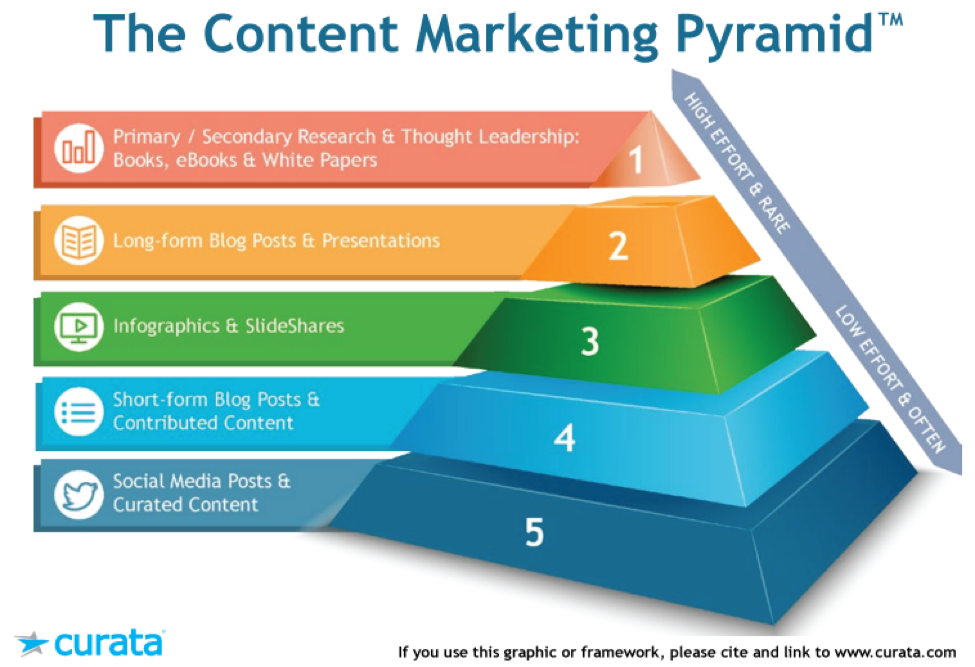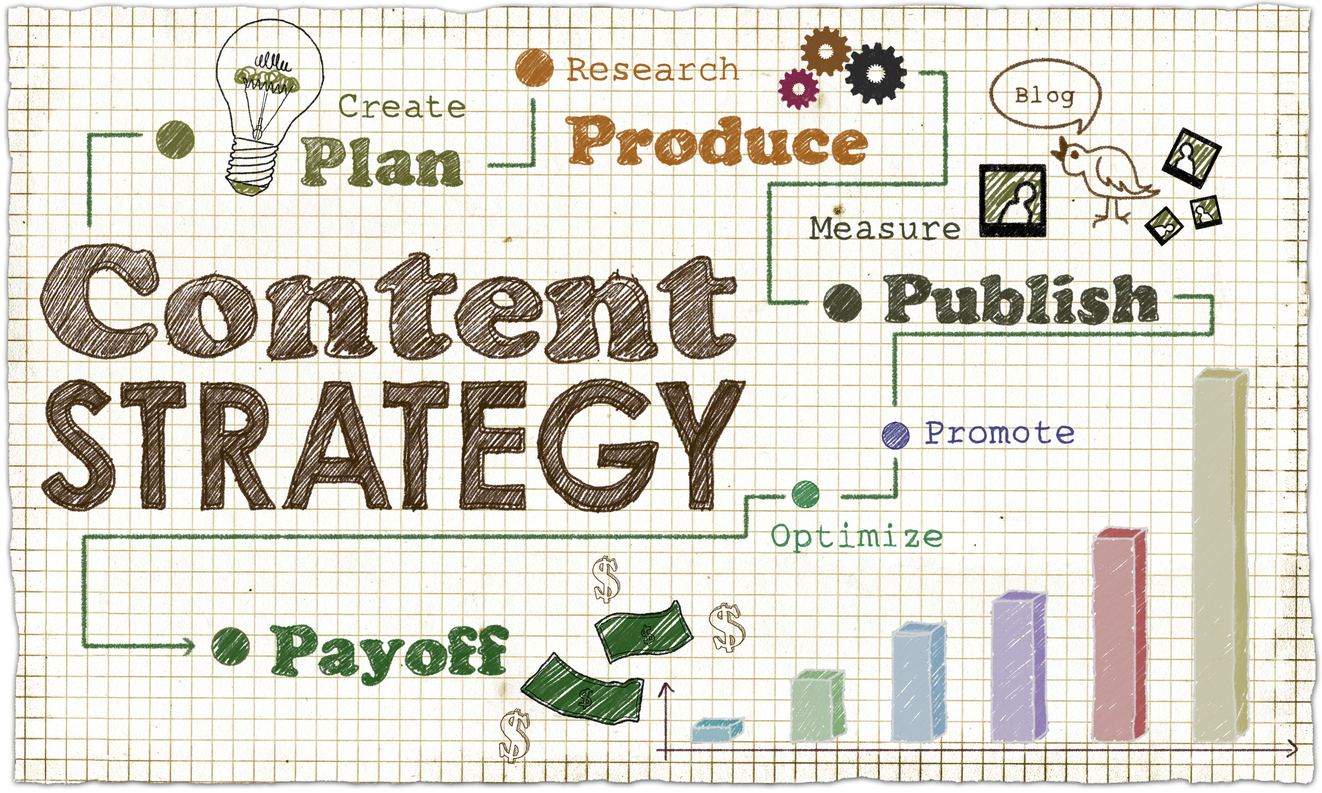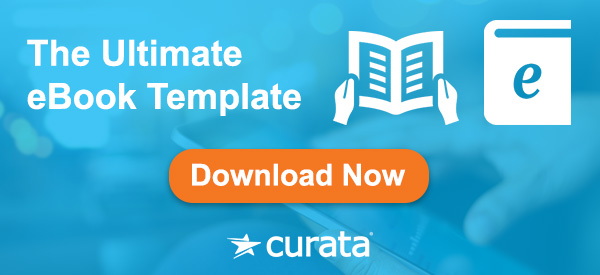- Share The Ultimate eBook Template [Free Download] on Facebook
- Share The Ultimate eBook Template [Free Download] on Twitter
- Share The Ultimate eBook Template [Free Download] on Linkedin
- Share The Ultimate eBook Template [Free Download] via email
The eBook is one of the most popular ways to get information and, for content marketers, one of the best ways to connect with an audience. But what is an eBook, exactly? And how do you create one? Get answers to these questions and a step-by-step guide with the following eBook template.
Remember when we used to buy tickets at a box office? Call a cab? Take photos with a camera? From shopping to banking to transportation, every aspect of our lives has been influenced by the smartphone, including the way we read books.
- By 2014, 50 percent of American adults had an e-reader or a tablet (Pew Research Center).
- eBook sales are forecast to account for about a quarter of global book sales by 2018 (Statista).
- In 2016, 28 percent of survey respondents stated they had read at least one eBook in the past 12 months (Statista).
Marketers have been quick to see the potential of this interactive format. According to author, speaker and PR/marketing maven David Meerman Scott, the eBook is one of the most powerful forms of content marketing.
Read on to find out why you should consider producing an eBook, and how to do it well. At the end of this post is the ultimate eBook template download, which is chock-full of tips for completing each section.
What’s an eBook?
An eBook (electronic book) is simply a digitally released version of a book. EBooks come in many formats and can be read on electronic devices, such as smartphones, tablets, laptops or specifically designed eBook readers.
Think of [an eBook] as a white paper on steroids (the sexy white paper): a report, generally 12—40 or more pages in length, that presents complex information in a visually attractive, reader-friendly format. The content is both informative and entertaining; the tone, collegial; the format, “chunky” rather than linear, to facilitate skimming and scanning.
—David Meerman Scott
B2B eBooks have quickly become a go-to asset for companies in all industries.
- More than half of B2B buyers said they rely more on content now to research their buying decisions than they did a year ago (Demand Gen).
- eBooks are among the top five tactics used by B2B content marketers (Content Marketing Institute).
- Sixty seven percent of buyers used eBooks in the past 12 months to research B2B purchasing decisions (Demand Gen).
Wait, is it eBook, ebook or e-book?
Although editorial style guides recommend the hyphenated “e-book,” we predict that the hyphen will fall by the wayside as it did for “e-mail.” We see both eBook and ebook in common usage, but prefer eBook.
Readers seem to prefer the unhyphenated version too. Google Trends, which measures relative search traffic over time, shows ebook or eBook has always been a lot more popular than e-book.
Four Reasons to Publish an Ebook
Ebooks offer organizations many potential benefits. They are typically more time-consuming and expensive to produce than blog posts. But whether your goal is to generate leads, brand awareness, or to educate customers, gate this valuable content so that you can collect visitors’ information.
Here are four reasons to add eBooks to your content strategy.
- Generate Leads
EBooks are one of the best ways to generate leads, especially for B2B marketers. B2B customers now have access to ever more sources of information before making a purchase. They like to make use of them. The sales cycle can be long, and you need assets that motivate readers to download a copy and return to your site for future assets. - Build Thought Leadership
Publish an eBook with exclusive content that defines a category or presents unique information or reflections on an industry. This builds thought leadership in an area that aligns with your product direction. Many experts use an eBook as a calling card to generate speaking engagements and appearances at industry conferences. Even if it’s self-published, an eBook burnishes your reputation. - Enhance Customer Education
EBooks help educate customers so they can decide if your product or service is right for them. They can also help customers use your product or service, and get the most out of their investment should they choose to become a customer. - Share Expertise With Target Audience
An eBook can provide detailed insight on an area of expertise that connects your company with a particular audience. Tailor the contents to their specific needs by addressing the pain points of a particular persona. This helps engage customers and turn them into brand ambassadors.
What’s the Difference Between an eBook and a White Paper?
In some ways, eBooks are an evolution of the white paper. A white paper is typically a more in-depth look at a narrowly defined topic than an eBook, which tends to be broader. EBooks tend to be more conversational in tone, less scholarly, and may present an overall look at an issue, trend, or industry rather than a deep dive into a particular problem/solution. (Check out The Ultimate White Paper Template [Free Download] for the definitive guide to writing a white paper.)
An eBook addresses a hot topic. It can present original content, collect or mine product reviews, or curate content that has appeared in other formats. A common form of eBook repurposes blog posts for example, and adds additional related information from industry experts and thought leaders.
Here’s a quick summary of differences between eBooks and white papers. It comes from MarketingProfs Chief Content Officer Ann Handley and co-author C.C. Chapman from their book, Content Rules.
| eBooks | White Papers |
|---|---|
| Broken into smaller chunks – designed for skimming and scanning | Long and linear – a deep read |
| Concept centric – based on ideas and trends of interest | Data centric – often based on formal research |
| Visually heavy – main text supplemented with call-outs, bullet lists | Text-heavy |
| Casual and collegial – a conversation among equals | Formal – impressive expert speaks to you |
How Does an eBook Fit My Content Strategy?
If you’re building your content framework, you already know eBooks are an excellent way to give your readers a deeper look into any topic.
According to CIO, “thin” online content, such as short blog posts, is waning in popularity. Experts suggest that “fat” content—such as eBooks—will continue to become more popular with consumers.
One way to do this is to follow the Content Marketing Pyramid strategy. Create one or two large assets per quarter (depending on your marketing needs and editorial calendar). Then repurpose those assets into smaller derivative pieces.

EBooks can serve as the core content other assets are derived from, making them excellent “tent poles” for content campaigns.
What Should My eBook Be About?
There are three common sources of information you can mine to help generate eBook topics.
Your Company
Look internally for your first source of inspiration. Simply, what does your company want to promote? Are you launching a new product or service? Do you want to present your CEO’s expertise on a particular topic? Are you creating a new market category and want to own search results on that topic? While an eBook should not be overly promotional, understanding your company’s vision should influence your topic selection.
Your Audience
Your second source of inspiration? The data revealing what your prospects and customers are interested in. First, check your site analytics. Which content is downloaded most frequently? Which blog posts have the highest traffic and the longest time on page? Then, head to sites like SpyFu, AnswerThePublic, or Keyword Tool to find out which key phrases people are searching for and at what volume. This will tell you which topics and issues your readers care about.
Your Competitors
Always check to see what else your readers are being offered. What are your competitors writing about? You can fill in the gaps or position your content as a superior offering.
How to Maximize eBook ROI
Once your eBook is published, you’ll want to continue to repurpose and promote it. Don’t simply check it off your lengthy production list and move on to the next deliverable.
Follow these three steps to get the most return out of your eBook investment:
- Track and measure performance. Close the loop by gathering the data you need to calculate ROI. Ascertain how many times it’s been viewed and downloaded at the very least. Content marketing platforms such as Curata CMP offer more sophisticated analytics functionality, with the ability to measure things such as social shares, leads generated, leads touched, pipeline generated, pipeline touched, and revenue influenced.
- Promote, promote, promote. Put as much effort into publicizing your new masterpiece as you did into creating it. Leverage social media, newsletters, email programs, search engine marketing and any other available channels—internal and external—to build awareness. Don’t forget to cross-promote with your other content assets.
- Optimize your reuse of eBook content. The Content Marketing Pyramid strategy puts an eBook at the top of a pyramid of content. You can then ‘mine’ it for smaller assets such as webinars, infographics, blog posts, and tweets. Use these smaller assets to drive traffic to the eBook.
Where Do I Start?
At the end of this post is a complete eBook template download with tips for completing each section. Keep reading to take a deeper dive into the elements of a successful eBook.
Choose a Topic
Consider what problems your audience has and develop a topic that appeals to your readers. The challenge is to choose a topic that overlaps with your audience’s interests and your business interests.
Identify compelling subject matter that will motivate your readers to download a copy. A key factor should be the key phrases you want to own on Google Search Engine Results Pages (SERPS) as a result of this eBook.
For inspiration, here’s Curata’s list of marketing eBooks on a range of content marketing topics.
Identify Your Audience
It’s critical to create an eBook that focuses on your audience’s needs, interests, and/or pain points. Look at your company with the fresh eyes of an outsider and minimize information dedicated to your company and its products. For additional tips on how to align with audience needs, refer to “Why It’s Worth Writing for a Niche Target Audience.”
Differentiate Your eBook
Analyze which eBooks already exist in your industry i.e., from your competitors. Determine which types of titles are most successful in search ranking, social shares, etc., and which aspects set those eBooks apart from the others. Decide what you can provide that your audience cannot get elsewhere. You may decide to emulate some of the attributes of the best titles, but don’t be afraid to be unique.
Recruit Your Writer
If you have the skill and time to do so, writing an eBook can be a very satisfying project. But many marketers lack either time, writing skill, or both. They need to look to freelance talent for the bulk of their content. Tap into your professional network to find a writer with the knowledge, passion, personality, and writing chops to produce a great draft.
Brainstorm the Outline
Develop an outline prior to beginning the writing process. This will eventually evolve into the table of contents. The outline will provide a map to keep you on track and help you make decisions about what to include. It will ensure your messaging and content are on-target, and that information flows in an easy-to-follow manner.
Map out sections and subsections. It is important to break up your text into several small chunks, with scannable headers and subheads. This increases readability and allows your reader to skim through the document and absorb the sections most relevant to their business.
Collaborate with your team on the outline to ensure your eBook plan is on target. Modifying your plan at this early stage is much easier than trying to change direction once your eBook is already written.
Gather Relevant Information
Pull all relevant source documents together to make it easier for your writer to get started. This could include product information, white papers, research your company has conducted, lists of interview sources, or any other existing content on the topic.
Pick a Title
Craft a title that grabs the reader’s attention and entices them to read and share your eBook. Add a subtitle to describe what the eBook will deliver. Consider search engine optimization as part of title creation. Tap into tools such as Google Keyword Planner and BuzzSumo to see which words and phrases are being searched for. Remember, focus on your audience’s needs versus your own. According to Moz, Google typically displays the first 50-60 characters of a title tag. Keep your titles under 55 characters so a majority of the title shows.
Create a Readable Design
The design of an eBook may be as important as the contents. If you want your content to be taken seriously, ensure it’s attractive by hiring a professional designer. If you can’t afford one, check out this post about how to design a great eBook without design skills. Remember, white space is your friend.
Allow readers to skim through sections by including headings or subtitles on every page, making it clear what each chunk of content is about.
Create a consistent color scheme based on the color of your logo so that the look matches your brand. Use the most dominant color for your section headers. A lighter version or a shade of gray can be used for the subhead color. Use these same colors throughout all visual elements of your white paper such as charts, graphs, or figures.
Use images to enhance the reader’s understanding of the material you’re covering such as photos, charts, diagrams, and other visuals. Highlight quotes or stats within your design by setting them apart or emphasizing them with color or font.
Choose a File Type
The most widely used file type for eBooks is the PDF (Portable Document Format) by Adobe. Almost all modern eBook readers, tablets, and smartphones support PDF files. If you want to provide an additional format, conversion software such as Calibre can reformat PDFs to display better on eBook readers.
Don’t Forget Quality Control
Run the final draft by several readers (trained editors are the best) for quality control. Once someone downloads your eBook, you won’t be able fix typos, add missing words, or line up a graphic. Using incorrect spelling and grammar distracts from your message, reduces your credibility, and ultimately, makes your message less persuasive.
Publish (and Pat Yourself on the Back)
Yay! You did it! Post your eBook on a dedicated landing page on your site. This page should describe the contents, the benefits of reading it, and provide a form for visitors to fill out with their contact information to download a copy. ‘Gating’ your content this way converts your visitors into leads that your sales team can follow up with.
Promote
You’re not done yet. Once your landing page is set up, use that URL to promote your eBook across your marketing channels.
Include a link to your landing page on your homepage or resources page. Share it on social media. Publish an excerpt of your eBook as a blog post or write a separate blog post on the same topic as your eBook.
Provide a link at the end of your post using a call-to-action to encourage readers to keep learning. Leverage partnerships that help you promote your eBook to a new audience and send an email to contacts who have indicated an interest in receiving offers from your company. Invest in relatively inexpensive advertising on Facebook. Pro tip: Include social media buttons in your eBook for easy sharing.
Use an eBook to link to your other content marketing assets, such as white papers, other eBooks, or blog posts. Make sure these assets are highly relevant to the topic at hand and focused on answers the audience may need, rather than simply your company’s products.
Curate Expert Content
Broaden your reach by asking subject experts for quotes about the eBook directly or by curating their content along with it. Be sure to follow ethical best practices for curating content, such as linking back to the original source, only taking a small portion of curated content, and adding your own annotation. For a guide to ethical curation, download Curata’s comprehensive eBook on the topic: Content Marketing Done Right.
The eBook Template You Need To Get Started
You now have all the information you need to create a high-quality, high-performing eBook. What are you waiting for? Download this free eBook template to create your own eBook today.

















